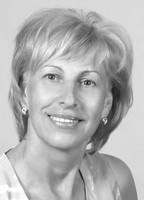Physical education department of University of Economics: current situation and development prospects of
Фотографии:
ˑ:
Teoriya i praktika fizicheskoy kultury №9 2017, pp.3-5
Dr.Hab., Professor L.B. Andryushchenko1
G.B. Kondrakov1
A.G. Rostevanov1
E.Y. Vnukova1
1Postgraduate A.G. Burov1
2Plekhanov Russian University of Economics, Moscow
Objective of the study was to analyse the key progress stages in the history of the Physical Education Department of G.V. Plekhanov’s Russian University of Economics and its sport club, current situation of the core activity fields, and the promising ways of its redesign and improvement in the process of the ongoing institutional and economic reforms at the University.
The study includes an analysis of the existing legal and regulatory framework for operations the University departments in the physical education and sports domain; overview of the Physical Education Department and its sport club history; and new projects to improve the staffing provisions, education and research processes and commercial services.
We believe that presently the Physical Education Department is being formed as a research and education centre to implement the Federal State Higher Education Standards (FSHES); develop and offer new fitness technologies; provide commercial health management services; while its sport club will be in control of the academic sports. The projects presented herein give a top priority to the health management and imaging idea.
Keywords: Higher education, physical culture and sport, modernization, innovative technologies.
References
- Kondrakov G.B., Stepyko D.G., Olkhovskiy R.M., Kuzmin M.A. Sportivnye kluby v sovremennom obrazovatelnom prostranstve [Sports clubs in modern educational space]. Pedagogicheskoe masterstvo i pedagogicheskie tekhnologii, 2016, no. 3 (9), pp. 175-178.
- Vit'ko S. Y., Kondrakov G. B. Puti povyisheniya effektivnosti form i metodov organizatsii fizicheskogo vospitaniya studentov [Ways to improve effectiveness of forms and methods of academic physical education process]. Izvestiya Tulskogo gosudarstvennogo universiteta. Fizicheskaya kultura. Sport, 2016, no. 4, pp. 15-21.
- Stolyar K.E., Vit'ko S.Y., Pikhaev R.R., Kondrakova I.V. Organizatsionno-metodicheskie podkhodyi k kompleksnoy otsenke fizicheskoy podgotovlennosti studentov [New institutional and practical system for students' integrated physical fitness rating]. Teoriya i praktika fiz. kultury, 2016, no. 9, pp. 9-11.
- Shutova T.N., Kuz'min M.A., Kondrakov G.B., Mamonova O.V. Model integratsii traditsionnykh vidov sporta i fitnesa v fizicheskom vospitanii studentov [Traditional sports and fitness integration model for academic physical education]. Teoriya i praktika fiz. kultury, 2016, no. 9, pp. 19-21.
- Shutova T.N., Andryushchenko L.B. Fitnes-tehnologii dlya povyisheniya dvigatelnoy aktivnosti molodezhi na osnove globalnogo podhoda [Young people's motor activity encouraging fitness technologies based on global approach]. Teoriya i praktika fiz. kultury, 2017, no. 3, pp. 54-56.
- Haff G.G., Haff E.E. Training integration and periodization. NSCA’s program design. National Strength and Conditioning Association; ed. by J.R. Hoffman. Champaign, IL: Human Kinetics, 2012, 325 p.



 Журнал "THEORY AND PRACTICE
Журнал "THEORY AND PRACTICE